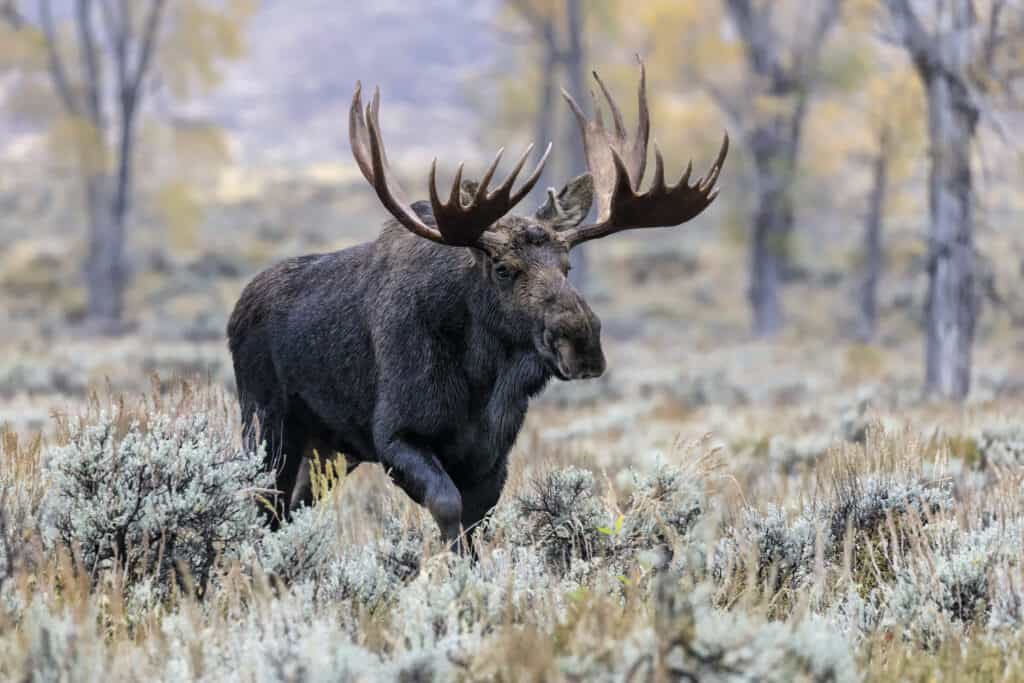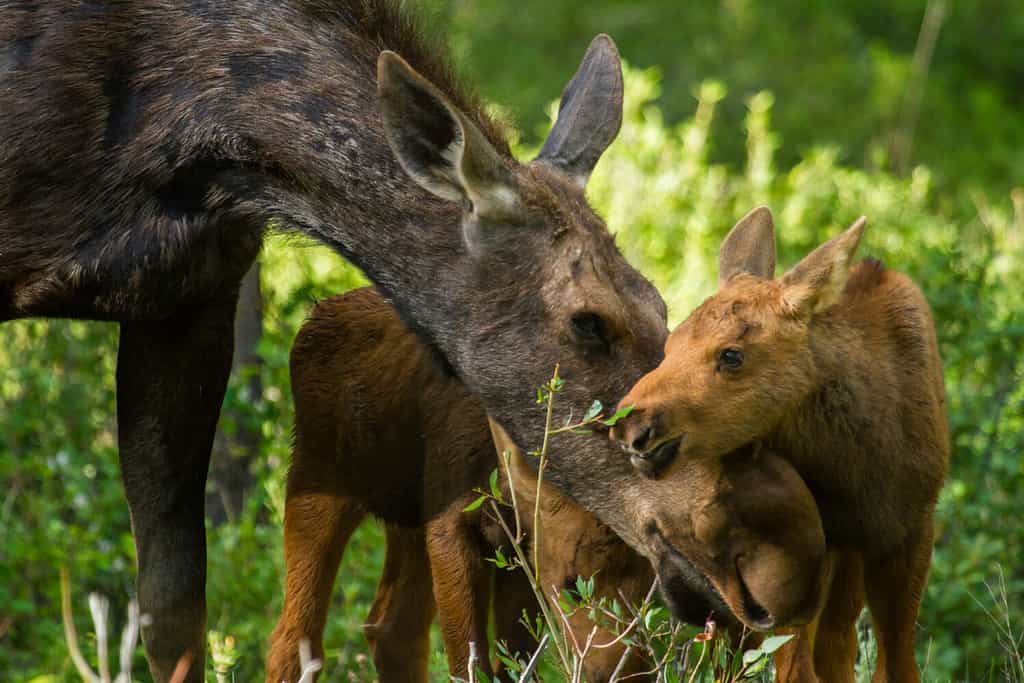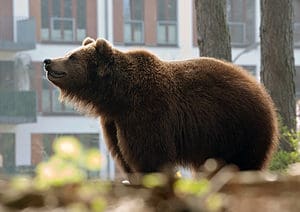This moose-spotting expedition turned out to be a bit more stressful than this guy was planning. It starts with him observing three moose who are some distance away but they quickly turn and head straight for him. The quickest and safest way to escape is up a tree so that is exactly what he does! Watch the full clip of this scary encounter!
Watch the Hair Raising Footage Below!
How Dangerous Are Moose?
It’s not hard to see how moose can cause some nasty injuries to humans. They are very large animals (some are over 1,500 pounds in weight) and have large antlers. According to the Alaska Department of Fish and Game (who knows a thing or two about wild animals), most people are more worried about bears than moose. This is misguided. More people are injured by moose than bears in Alaska each year.

This large bull moose is strong and has big antlers that can be used as a weapon.
©David Osborn/Shutterstock.com
These magnificent animals are most likely to hurt you when they charge, kick or stomp on you. Most of their charges are bluffs and they abort them halfway through. But you won’t know this until it is too late, so always act as if it is the real deal.
When Are Moose Most Aggressive?
As is the case with most animals, moose are most likely to be aggressive when they feel threatened. This is when they feel that they need to do something to protect themselves or their young. So, moose with young calves and individuals that are already stressed and tired (perhaps after walking through deep snow) are most likely to be aggressive. If you see some moose resting, always leave them alone. It is also a fact that very few moose like dogs, especially if they are off the lead!

Mother moose and very protective of their calves and will become aggressive if threatened.
©Green Mountain Exposure/Shutterstock.com
Bull moose can be particularly aggressive during the rutting (mating) season which occurs in late September and October. Also, mother moose will have young calves with them in late spring and summer and are therefore more likely to attack humans who come too close. One of the most dangerous places to be is between a mother moose and her calf!
Is It Normal Behavior for a Moose to Charge a Human?
No, not unless the moose is stressed. Under most instances, moose aren’t an aggressive species. However, as discussed above, a moose will attack when it feels threatened, such as a bull moose in mating season or a cow moose protecting her young.
When near a moose, there are certain signs you can detect that will tell you if a moose is stressed. An annoyed moose may show some of the following behavior:
- Back and neck hairs standing up (similar to a cat)
- Ears going down against its head
- Snorting and stomping
- Lip licking
The first thing to do when a moose shows signs of aggression is to talk, making your presence known, then slowly back away. If a moose charges, hide behind something solid, like a tree, or try to get inside a vehicle or building. The photographer in this video chose to climb a tree because a moose cannot reach you if you are high enough. Its a great choice if a nearby tree is the kind that can be climbed or you are a good tree climber. However, if you fail to find protection, hit the ground, curl into a ball, protect your head, (hope for the best!), and lie still until the moose retreats.
Thank you for reading! Have some feedback for us? Contact the AZ Animals editorial team.








